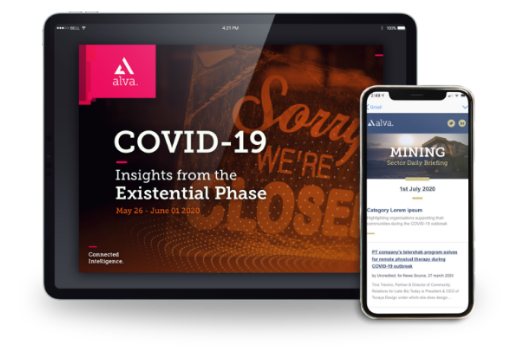Building stakeholder understanding in Pharma through unstructured data
The regulations surrounding the pharma industry can sometimes mean it is difficult to obtain detailed insight on the issues driving perceptions of the sector.
Key stakeholder groups such as HCPs and Payers may be unwilling or unable to frequently communicate with pharmaceutical firms and this presents a challenge to Corporate Affairs and Communications leaders seeking to protect and enhance their company’s corporate value.
- How do we know where we stand with our different stakeholders?
- What are the key reputational risks we’re facing?
- How can we positively differentiate ourselves from the competition?
Unstructured data insights
With the ever-increasing proliferation of unstructured digital data and the growing sophistication of topic modeling techniques, it is now possible to pinpoint and categorise publicly-available content by stakeholder audience.
Using a triangulation technique incorporating self-identification, readership habits and self-declared thematic priorities, machine learning models can be used to categorise discussions happening in the public domain by stakeholder group.
This approach enables pharmaceutical firms to mine publicly-available content including print, online, broadcast and social media as well as polls and surveys, blogs and forums to effectively answer these questions.
This gives an enormous amount of information on how companies, brands, research, drugs, etc are being perceived by investors, HCPs, regulators, payers, Patient Advocacy Groups (PAGs), scientists and potential employees among others.
This content can then be analysed by sentiment, strength of emotion, theme, directional trend and many other measures, all effectively in near real-time.
Best of all, this analysis is entirely unprompted – there is no issue with observer bias, stakeholder fatigue or unrepresentative sample sizes and the results are turned around in a matter of days rather than weeks or months.
Competitive benchmarking
While often the starting point for most companies is understanding their own stakeholder perceptions and therefore reputations, the focus often quickly turns to competitive benchmarking. Understanding not only where the company ranks relative to its competitors but also how and why it is differentiated is invaluable intelligence for both Communications and the Executive.
This can take the shape of the identification of an unmet need from a particular audience or indeed a specific tactic or approach that has served a competitor well.
- How are we perceived by investors on Artificial Intelligence?
- Are we negatively differentiated on pricing?
- Can we leverage our CEO more effectively on patient-centricity?
With competitive benchmarking firms are not only able to understand how they rank and are perceived relative to their peers by that audience, but comparative analysis can also be used as an input to strategy development – what should we do differently and why?
Integrating data insights
With a framework established for rapidly and accurately understanding shifting stakeholder perceptions and their drivers, companies may wish to augment the richness of the analysis through the integration of their own proprietary data.
At a stakeholder level, this can mean the inclusion of employee satisfaction scores, customer service transcripts, private brokers notes, net promoter scores or primary research verbatims.
All of these additional data points can be integrated into the stakeholder model to give a fuller picture and, more importantly, to give a consistent, consolidated view of where the company stands with its different key audience groups. This prevents the confusion caused by siloed partial analyses contradicting one another. In addition, this can help understand the causality between channels – for example, does media coverage in certain titles impact upon employee satisfaction scores or other channels?
While the pharma sector is unique in both the scrutiny it faces and the inaccessibility of many of its key stakeholders, the data and analytical techniques are now available to bring the thoughts, feelings, and concerns of all but its most elusive audiences to light. As with so much in the field of research, the first movers will be those who reap the greatest rewards.
Be part of the
Stakeholder Intelligence community








